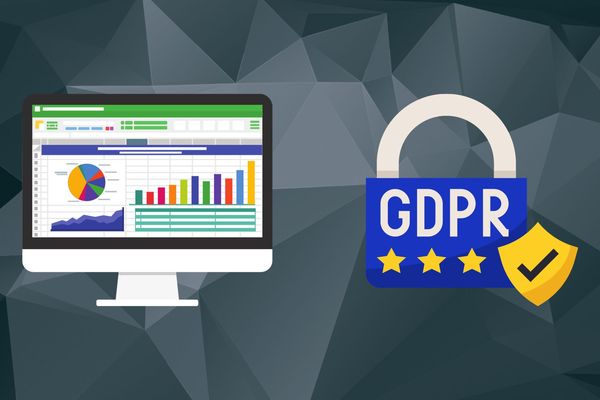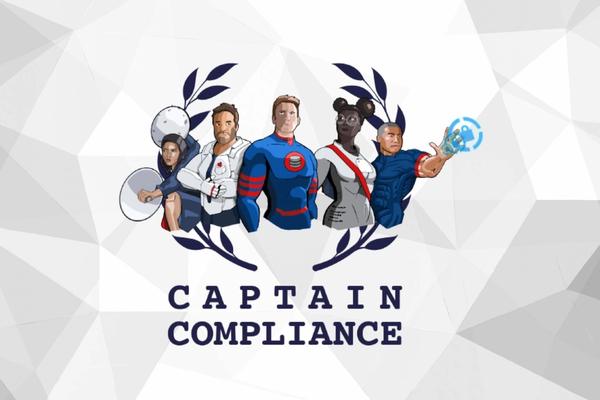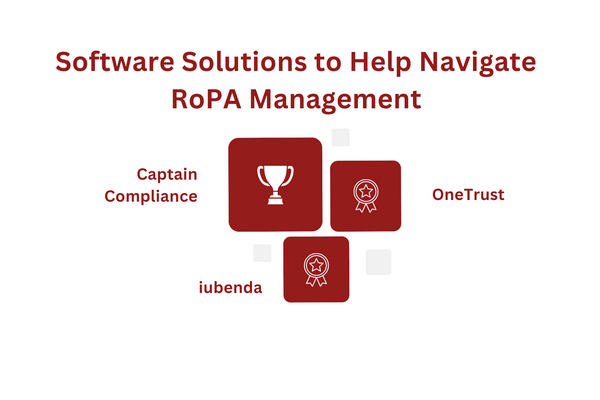
RoPA (Record of Processing Activities) Things to be Aware of for 2025 and Beyond:
1. Expanding Scope of Data Privacy Laws:
- New Regulations: Keep an eye out for emerging data privacy laws and regulations at both the national and international levels. These may introduce new requirements for RoPA, such as specific data categories to be documented or stricter rules for data transfers.
- Sector-Specific Laws: Certain sectors, like healthcare or finance, may face industry-specific data privacy regulations that impact RoPA. Stay informed about these developments and update your RoPA accordingly.
2. Increased Focus on Data Minimization and Purpose Limitation:
- Detailed Purpose Descriptions: RoPA should clearly and specifically define the purposes of data processing. Avoid vague or generic descriptions. Demonstrate that you collect only the data necessary for the stated purpose.
- Data Retention Policies: Document data retention periods for each processing activity. Establish clear policies for data deletion or anonymization when data is no longer needed for its original purpose.
3. Enhanced Data Subject Rights:
- Streamlined DSR Processes: Ensure your RoPA facilitates efficient responses to Data Subject Requests (DSRs), such as access, rectification, erasure, and data portability. Link your RoPA to your DSR fulfillment processes.
- Consent Management: If you rely on consent as a legal basis for processing, document how you obtain, manage, and withdraw consent. This should be reflected in your RoPA.
4. Data Security and Breach Notification:
- Security Measures: RoPA should include a general description of the technical and organizational security measures implemented to protect personal data.
- Breach Response Plan: Link your RoPA to your data breach response plan. Ensure that your RoPA helps you identify affected individuals and data categories in case of a breach.
5. Third-Party Risk Management:
- Processor Relationships: If you engage third-party processors, clearly document their roles and responsibilities in your RoPA. Include details about data transfers and safeguards in place.
- Vendor Due Diligence: Ensure your RoPA reflects due diligence conducted on third-party vendors regarding their data protection practices.
6. Automation and Technology:
- Automated Processing: If you use automated decision-making or profiling, document these activities in your RoPA, including the logic involved and potential impact on individuals.
- New Technologies: As you adopt new technologies (e.g., AI, IoT), update your RoPA to reflect any new data processing activities and associated risks.
7. RoPA as a Living Document:
- Regular Updates: RoPA should be a dynamic document, regularly reviewed and updated to reflect changes in your data processing activities, systems, or legal requirements.
- Version Control: Maintain version control of your RoPA to track changes and ensure you are using the most current version.
8. Accountability and Demonstrating Compliance:
- RoPA as Evidence: RoPA serves as evidence of your compliance with data privacy regulations. Ensure it is accurate, comprehensive, and readily accessible to supervisory authorities upon request.
- Training and Awareness: Train relevant personnel on the importance of RoPA and their responsibilities in maintaining it.
Remember:
- RoPA is not a one-time task but an ongoing process.
- It requires collaboration across different departments within your organization.
- Stay informed about evolving best practices and guidance from data protection authorities.
By paying attention to these aspects, you can ensure your RoPA remains a valuable tool for data privacy compliance in 2025 and beyond.
What Does RoPA Stand For? (Record of Processing Activities)
Since the arrival of the GDPR, maintaining a RoPA (Record of Processing Activities) has become a vital compliance requirement today.
In a business environment where customers prioritize trust, RoPA management isn’t just about making regulators happy; it’s about promoting transparency and accountability through valuable data insights.
This article will teach you everything you need to know about RoPA management. We’ll also provide a checklist and recommended solutions to help you tackle RoPA management confidently.
Creating and maintaining Records of Processing Activities (RoPA) is a crucial aspect of complying with data protection regulations like the GDPR (General Data Protection Regulation). RoPA serves as a comprehensive documentation of all data processing activities within an organization, providing insight into why, how, where, and what personal data is processed. Here are some best practices to create and maintain these records effectively:
1. Start with a Data Mapping Exercise – Conduct a thorough data mapping exercise across your organization. This involves identifying all types of personal data you process, the purposes for processing, data flow across departments, and third parties involved. Data mapping lays the groundwork for a detailed RoPA.
2. Ensure Inclusivity – Include all relevant data processing activities. RoPA should cover a wide range of processing activities, from employee data management to customer data processing and beyond. Every department’s data processing activities should be documented.
3. Assign Responsibility – Designate specific individuals or teams responsible for maintaining the RoPA. This could be the Data Protection Officer (DPO) or a dedicated compliance team. Clear accountability ensures the RoPA is regularly updated and compliant.
4. Use a Standardized Format – Adopt a standardized format or template for the RoPA to ensure consistency across the organization. This format should align with regulatory requirements, making it easier to review and update the records as needed.
5. Detail the Purpose of Processing – For each processing activity, clearly document the purpose. This helps to justify the data processing under the legal bases defined by privacy laws and regulations.
6. Identify Data Sharing and Transfers – Document any data sharing with third parties or data transfers across borders. Include the names of third parties, types of data shared, and the legal mechanisms in place for cross-border transfers.
7. Review and Update Regularly – Regularly review and update the RoPA to reflect any changes in processing activities, legal bases, data protection impact assessments, and organizational changes. An outdated RoPA can lead to non-compliance.
8. Implement Privacy by Design – Integrate privacy by design principles into your RoPA creation and maintenance processes. This means considering data protection and privacy from the inception of any new process, product, or service.
9. Educate and Train Staff – Provide training and resources to staff involved in data processing and the maintenance of the RoPA. Everyone should understand their role in data protection and how it contributes to compliance.
10. Prepare for Audits – Organize the RoPA in a way that it can be easily audited. Being able to promptly and efficiently provide your RoPA to supervisory authorities upon request is essential for demonstrating compliance.
11. Secure the Records – Ensure the RoPA itself is stored securely, with access controlled and limited to authorized personnel. The security of these records is as important as the security of the data they describe.
Maintaining a RoPA is an ongoing process that requires attention and dedication. It’s not only a regulatory requirement but also a good practice that can improve data governance, increase transparency, and build trust with data subjects.
Let’s dive in!
Key Takeaways
A RoPA is a detailed account of your data processing activities, including what data you collect, how you use it, who you share it with, how you protect it, and more.
Given their expertise in data protection, DPOs are typically in charge of RoPA management.
Failing to address RoPA management can have severe consequences under the GDPR, including fines of up to €20 million or 4% of your global annual turnover (whichever is greater).
What is RoPA Management?
What is RoPA Management.jpg

First things first, a RoPA is a living document that explains how your business collects, uses, shares, and protects personal data. It’s a vital part of compliance under the General Data Protection Regulation (GDPR) and several other data privacy laws.
Under Article 30, the GDPR requires businesses with 250 or more employees to maintain a RoPA.
But it doesn’t stop there.
Businesses with less than 250 employees must also maintain a ROPA if they meet any of the following thresholds:
Engage in data processing likely to pose a high risk to people’s rights and freedoms
Process personal data frequently
Processes sensitive personal information or data relating to criminal offenses
RoPA management is the process of creating, maintaining, and updating your RoPA. It’s an essential first step in developing and maintaining effective data management practices within your organization.
To put this in context, picture a well-organized ship with a crew that knows every route and destination by heart. Similarly, effective RoPA management ensures your team knows the ins and outs of your data processing operations.
What Information Must be Included in a Valid RoPA
Article 30 of the GDPR outlines what information businesses must include in a valid RoPA.
While the content differs slightly for data controllers and processors, a valid RoPA must contain the following at a bare minimum:
Names and contact details of the data controller, data processor, relevant representatives, and your data protection officer (DPO), if applicable.
Your purpose (i.e., lawful basis for processing personal data
The categories of data subjects and types of personal data you handle
The categories of recipients you share data with
Third parties in foreign countries or international organizations you share data with
How long you plan to retain different data types
A description of your technical and organizational security measures to protect data
Who Should be in Charge of RoPA Management?
Who Should be in Charge of RoPA Management.jpg

To manage RoPA effectively, some knowledge of data protection is necessary. As such, RoPA management typically falls on the capable shoulders of a Data Protection Officer (DPO).
DPOs are data protection experts who oversee an organization’s compliance program and ensure adherence to the GDPR’s requirements.
The DPO has several key responsibilities, including:
Advising the organization on relevant data protection laws
Developing and implementing data protection policies and procedures
Monitoring the organization’s GDPR compliance program
Providing insights on Data Protection Impact Assessments (DPIAs)
Weighing in on Data Subject Access Requests (DSARs)
Cooperating with relevant supervisory authorities
DPOs ultimately help align business activities with overarching data protection principles. In other words, your DPO is the bridge between your operations and compliance.
If a DPO is not available, businesses often outsource compliance to compliance services like Captain Compliance.
RoPA Management Checklist
RoPA Management Checklist.png

As mentioned, RoPA management goes beyond regulatory compliance. It’s about gaining data insights, enhancing transparency, and building a foundation of trust with your customers.
Here’s our checklist for navigating RoPA management effectively:
Map Your Data Flows
Before drafting your RoPA, you must first understand how personal data flows within your business through data mapping.
In practice, this involves creating a visual map that outlines the data’s journey, from collection to processing, storage, and eventual deletion. This exercise can also help uncover risks and vulnerabilities in your data management processes.
Categorize Data Subjects and Personal Data
Next, you need to categorize data subjects (individuals) and the types of personal data you process. Data subjects can typically be classified into customers, employees, suppliers, etc.
On the other hand, personal data can be classified into financial data, health records, contact information, etc. Understanding these categories helps you apply appropriate data protection measures.
Define Data Retention and Deletion Policies
Effective RoPA management requires clear data retention and deletion policies. The objective here is to strike a balance between the GDPR’s storage limitation principle and your business needs.
Equally important is having processes for the timely deletion of unnecessary data to reduce risks and maintain compliance.
Upgrade Security Measures
You must regularly update your security measures to ensure effective RoPA management. Practically speaking, you’ll need to implement safeguards like encryption, access controls, multi-factor authentication, and regular security patches.
It’s worth noting that your security measures should reflect the sensitivity of the data you process. In other words, more sensitive data requires stronger security.
Conduct Regular Data Risk Assessments
During RoPA management, you’ll likely come across some data privacy risks within your systems.
To address these risks, you need to conduct data risk assessments to determine their impact on your activities. Once you have a clearer picture, you can then tailor strategies to effectively mitigate them.
Stay Updated and Adaptable
It’s important to be agile in your approach to RoPA management. This means updating your records whenever changes occur in your data processing activities, security measures, or organizational structure.
A proactive approach ensures your RoPA accurately reflects your current data processing practices.
Collaborate and Communicate
Last but not least, you need to maintain an open communication line with all stakeholders involved in data processing.
Collaboration ensures everyone understands and acts in line with data privacy goals. It also contributes to a culture of responsible data governance within your organization.
Software Solutions to Help Navigate RoPA Management
Software Solutions to Help Navigate RoPA Management.png

RoPA management can be complex and time-consuming, especially for businesses that process large volumes of personal data.
Thankfully, there are several top-tier software solutions you can outsource RoPA management to for effective results. Let’s go over a few:
Captain Compliance
At the top of our list is Captain Compliance, a leading compliance solution with a robust collection of privacy features to help streamline RoPA management.
Here’s why Captain Compliance stands out:
Simplified RoPA Management: Our software simplifies RoPA management, making implementation straightforward.
Intuitive Interface: Navigate data mapping, categorization, retention policies, and updates effortlessly with our user-friendly interface.
Efficient Data Flow Mapping: Get a crystal clear picture of your data processing activities.
Retention Policy Setting: Define data retention and deletion policies seamlessly.
Regular Updates and Adaptability: Keep your RoPA current through prompt updates whenever changes occur in your activities or security measures.
OneTrust
OneTrust is a key data privacy management platform with a great RoPA module to help businesses create and maintain their RoPAs.
OneTrust is a good choice for businesses of all sizes but is especially well-suited for large companies with complex data processing activities.
iubenda
Iubenda offers comprehensive solutions to make websites and apps compliant across various legal jurisdictions, including the GDPR. Iubenda also excels in compliance elements like building and maintaining accurate RoPAs for privacy teams.
TrustArc
TrustArc offers a robust solution for managing an organization’s data flow (a key RoPA management feature). Its data inventory hub provides automated data discovery capabilities and streamlines workflows to drive compliance efforts.
DataGrail
DataGrail is another data privacy management platform that includes a RoPA management module. It specializes in data mapping and automating data subject access requests to jumpstart data privacy compliance.
What’s Next?
After reading this guide, you’re now equipped with a solid understanding of RoPA management. The next step is implementation, and that’s where we come in to help you navigate the process seamlessly.
At Captain Compliance, we don’t just offer solutions; we accompany you on your journey toward data privacy excellence. Our user-friendly software and tools simplify RoPA management, making it a hassle-free process.
Ready to watch your compliance worries fade away? Get in touch today!
FAQs
What is a RoPA, and why is it crucial for your business?
A RoPA is a detailed record-keeping mechanism that documents how your organization processes personal data.
Maintaining a RoPA demonstrates transparency and accountability. It also helps you effectively manage and safeguard personal data.
Not sure how to start? Check out our GDPR RoPA template
What are the key steps to effectively manage RoPA?
To manage RoPA effectively, we recommend taking the following steps:
Understand your data flows
Categorize data subjects and personal data
Define your data retention and deletion policies
Update your data security measures
Conduct regular risk assessments
Update your RoPA periodically
Learn how to manage RoPA under Brazil’s LGPD
How often should you update your RoPA?
It’s advisable to update your RoPA whenever there are changes in your data processing activities, security measures, or organizational structure.
Moreover, annual or quarterly updates ensure your RoPA accurately reflects your current data processing practices.
Need Help Getting Started? Check out our RoPA Examples
How does RoPA management contribute beyond compliance?
RoPA management goes beyond compliance by enhancing data governance, mitigating risks, optimizing operational efficiency, building consumer trust, and providing strategic data insights.
It also establishes your business as a responsible data handler, fostering a competitive edge in the data-driven landscape.
Explore Our Data Protection Compliance Services.